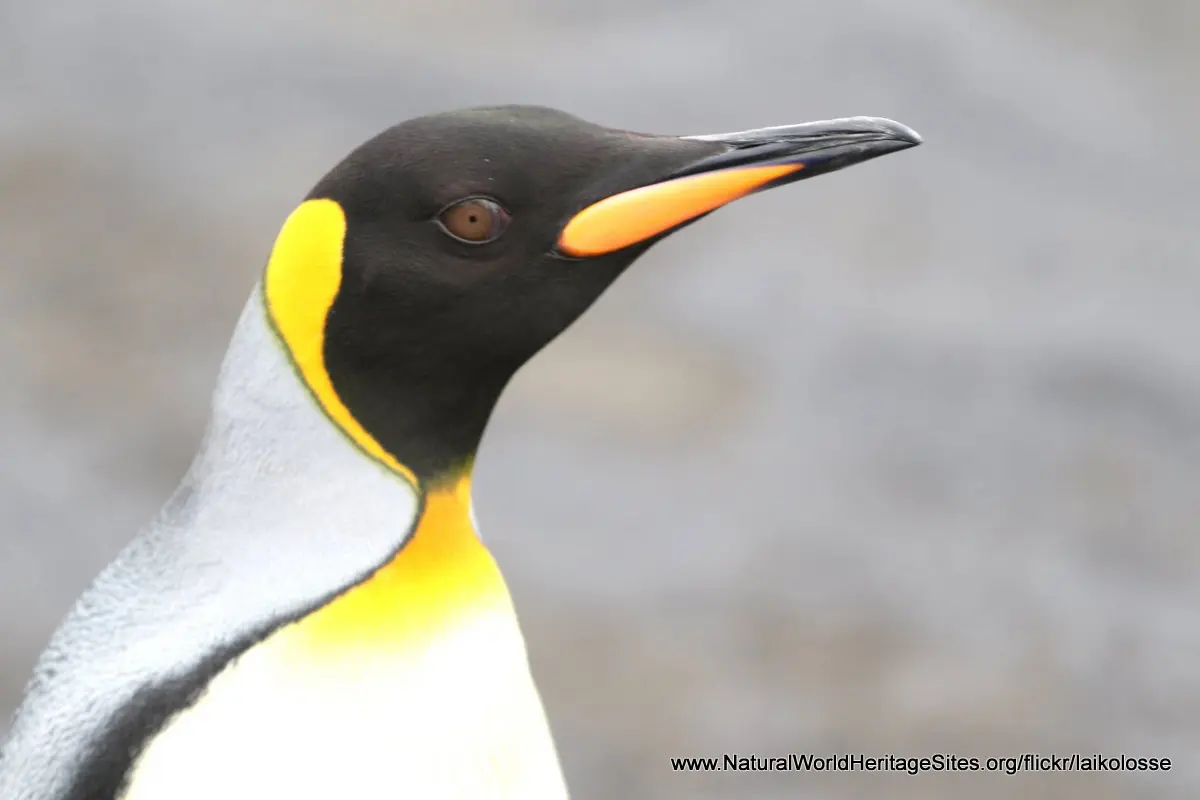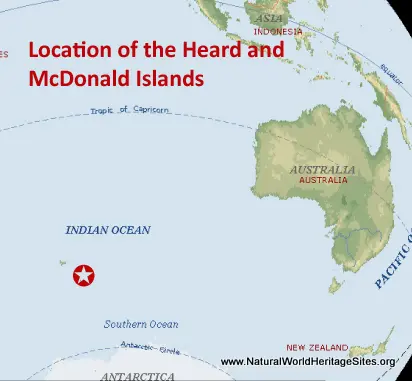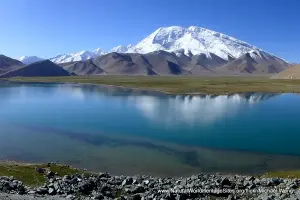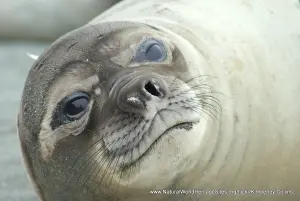EXPLORE Heard and McDonald Islands with this slideshow, check the location map and get all the facts and information below.
For slideshow description see right or scroll down (mobile). Click to view slideshow
Location and Values: The Heard and McDonald Islands are remote sub-Antarctic volcanic islands located in the far south of the Indian Ocean, about 1,600 km from Antarctica and half-way between Australia and South Africa. They lie a little to the south of the French Austral Lands and Seas, and include an extensive surrounding marine reserve (which accounts for 94% of the site’s total area). They are globally outstanding as the only volcanically active sub-Antarctic islands. Heard Island’s Big Ben volcano (2,745m) is in a state of continuous activity while the volcano on the smaller McDonald Island recently became active after 75,000 years of dormancy, resulting in a doubling of the size of the island. From a geological perspective the islands provide an active example of plume volcanism from a major submarine plateau.
In addition to their outstanding geological features the Heard and McDonald Islands are globally important as one of the world’s rare pristine island ecosystems with virtually no alien species and minimal human impact. They provide extraordinary opportunities for understanding natural ecosystem processes and the impacts of climate change. Heard Island’s fast-flowing glaciers respond quickly to climate change and areas of newly de-glaciated land provide unparalleled opportunities for the study of the dispersal and establishment of plants and animals. There are major breeding colonies of seals, petrels, albatrosses and penguins within the islands’ intact ecosystems that contribute to our understanding of population dynamics and ecological interactions, as well as helping in monitoring the health of the wider southern oceans ecosystem.
Conservation Status and Prospects. According to IUCN’s Conservation Outlook Assessment (2020) the conservation status of the Heard and McDonald Islands is ‘good’. The IUCN report notes that the site’s isolation and extremely difficult access limits the possibility for human impacts. However, there is concern over the spread of an invasive alien species of grass (Poa annua) across the rapidly-expanding ice-free areas of Heard Island.
Links:
Google Earth
Official UNESCO Site Details
IUCN Conservation Outlook
UNEP-WCMC Site Description
Birdlife IBA
Slideshow description
The slideshow ‘tells the story’ of the Heard and McDonald Islands starting with some spectacular views of Heard Island’s Big Ben volcano and illustrating many of the seabird species that live in the southern oceans. It includes photos from one of the rare land-based scientific expeditions to Heard Island, contributed by one of the scientists aboard the R.V. Braveheart towards the end of the southern summer in March-April 2016.
The islands and their surrounding oceans support 23 species of marine mammals (including seven species of seals, 13 whales, two dolphins and a porpoise) and 34 species of birds (including substantial populations of macaroni, gentoo, king and southern rock penguins, as well as black-browed, light-mantled and wandering albatross). Many of these species are illustrated in the slideshow,including elephant seals, king penguins, a gentoo penguin rookery, southern rock-hopper penguin, soft-plumaged, white-chinned and giant petrels, sub-antarctic and brown skuas, kelp gulls, fulmar prion and the endemic Heard Island cormorant. Some of the site’s geological features are illustrated including frost-fractured and wind-scoured rocks, various Eolian features, sedimentary ice, Nullabor sand patterns and a Drygalski formation block (with thanks to Flickr contributor laikilosse for technical details!).
The following Flickr photographers are acknowledged with thanks for their contributions to this slideshow. The majority of the photos were provided by laikilosse and Richard Arculus, with additional images by Inigo Cia and Pedro Martins Pereira Junior.
Factfile
Website Categories:
Islands;
Earth Features
Area: 6,589 km2
Inscribed: 1997
UNESCO Criteria:
- Geological features (viii);
- Ecological processes (ix)





